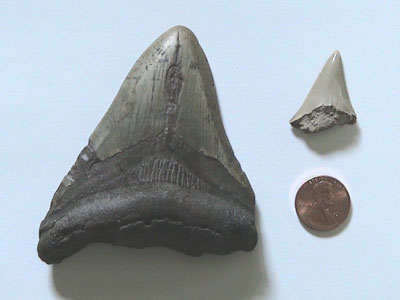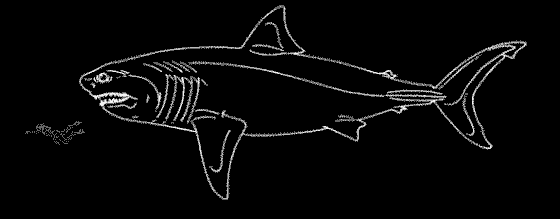 In the summer of 2006, some friends
and I went down to Cooper River
in South Carolina, led by trip leader Clement Berard. Cooper River is famous for
fossils, colonial artifacts, Native American arrowheads, spearpoints and earthenware
pottery, but mostly for the teeth that were left behind by prehistoric sharks when
the lowlands of South Carolina were underneath an ancient sea millions of years ago.
Construction, tidal currents and natural erosion routinely uncover these teeth and
wash them into the river, where intrepid divers like yours truly go to root them
out of the gravel beds on the bottom.
In the summer of 2006, some friends
and I went down to Cooper River
in South Carolina, led by trip leader Clement Berard. Cooper River is famous for
fossils, colonial artifacts, Native American arrowheads, spearpoints and earthenware
pottery, but mostly for the teeth that were left behind by prehistoric sharks when
the lowlands of South Carolina were underneath an ancient sea millions of years ago.
Construction, tidal currents and natural erosion routinely uncover these teeth and
wash them into the river, where intrepid divers like yours truly go to root them
out of the gravel beds on the bottom.
The diving was quite a bit different from the crystal-clear waters that I usually enjoy diving in. At spots, the current can be ferocious, and there's all the usual algae, weeds, reeds, trees, and other debris that you would expect to find washing down a river. The river bottoms we explored were usually about 20 or 30 feet deep and as dark as night: even with a powerful dive light, I couldn't see more than about three to five feet in front of me. In addition, we each carried a tool to help keep us anchored in the current. I used a large flat-head screwdriver with a lanyard attached, but others used a small pick to keep steady. Once I got down and got my bouyancy right, I just found a patch of gravel and looked through the rocks for the triangular objects. It was really that easy!

The fossil that divers treasure most is that of the Carcharodon (or
possibly Carcharocles) megalodon tooth.
Originally thought to be the direct ancestor of the modern-day great white shark
(Carcharodon carcharias), some paleontologists nowadays believe megalodon to have been an evolutionary dead end.  The
debate continues, but in either case, at over 52 feet in length it remains the
largest predatory fish ever to inhabit the world's oceans. The drawing at the right shows
its size in relation to a hapless human diver.
The
debate continues, but in either case, at over 52 feet in length it remains the
largest predatory fish ever to inhabit the world's oceans. The drawing at the right shows
its size in relation to a hapless human diver.
Megalodon probably died out at the end of the Pliocene epoch, around 1.6 million years ago. But a number of sensationalistic books and movies, as well as some eye-witness accounts, have suggested the possibility that megalodon still lives somewhere in the world's oceans.
All told, I came home with over 20 fossils and fossil fragments, the best of which are shown above.